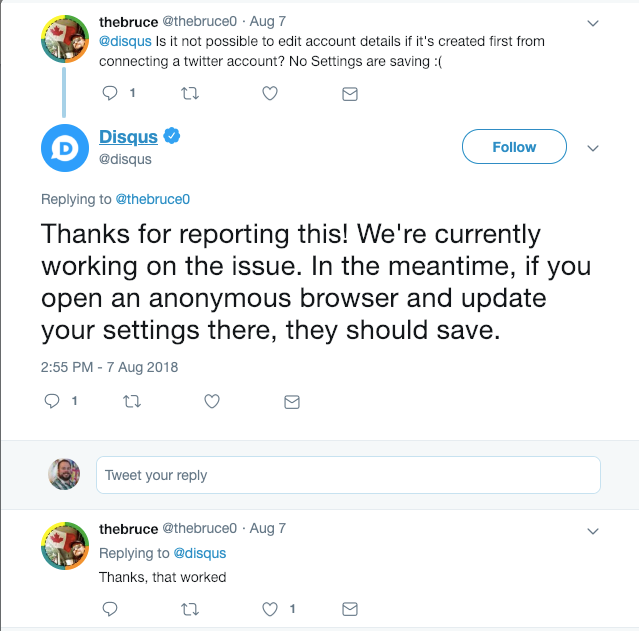Listening on Social Media
Who could have predicted the @ and # symbols becoming so powerful to the consumer and, if handled correctly, to your business? More and more consumers who mention your brand expect answers to be quick, from a human, specific to them and actually solve the problem.

As Matt Davison, founder of Travel Tractions says:
“Tracking brand mentions is an extremely important part of marketing, it allows you to jump in a conversation and help your brand in real time, this is extremely important for brands in general and not something that should beoverlooked.”
Depending on the nature of your product or the demographic of your end users you will have a different approach to collect and respond to feedback. Not all strategies will be the same, and you need to take the time to consider what is right for your organization. So how do you prepare a listening and response strategy for social media?
Selecting a Social Media Platform
The first step is to figure out where your online brand will live. There are a wide variety of choices for different markets and media. Nimble outlines the different demographics that use different types of social media. It is vital you understand those differences and who you want to target as you create your social media strategy.
For example, the written content posts that are seen on LinkedIn are frequented by fewer millennials than the more media-driven platforms such as Facebook and Instagram. LinkedIn remains the top place for business users to share ideas and guidance on how to solve business problems. If you want to spread B2B brand awareness through your blog posts, product updates, or key business partnerships, LinkedIn would be a great platform on which to do so. However, if you want to attract younger customers, or sell more B2C focused products, it is more beneficial to invest in image and video content that can be added to Twitter or Facebook. Another example of demographics being split is that Instagram and Snapchat have more female users, and as such, if your product is targeted for women, those platforms will give you higher success.
Twitter can be very appealing in both the B2C and B2B markets because it allows you to reach a lot of people and businesses very fast. There are over 67 million Americans on Twitter, and the international presence is even larger. 79% of Twitter accounts are non-US based. Twitter also has become a popular first place to go to send feedback to a company. Stuck in a long line at a store? Tweet at the brand to express your frustration. Had a great meal? Tweet a picture to the restaurant to say thanks. It’s fast, public and a powerful platform to showcase your brand.
With over 2 billion monthly active users, Facebook has become the cornerstone of a lot of social media strategies. Nimble says:
“With its great ‘Facebook for Business’ platform and analytics, you are able to track your success and engage with a massive audience. This includes many items, such as targeting tools that allow you to segment your organic posts by a number of demographics including age, gender, and education to name afew.”
Like Twitter, posting on a brand’s Facebook page has become commonplace. When handled correctly, it is a great way to engage B2C consumers.
Maintaining social media responses and content feeds can be a time-consuming project, so focus your energy on the platforms that most suit your addressable market and product demographics.
What To Monitor
The next key to your social media strategy is monitoring mentions. To do this at scale, you will need to find a tool that can help make sense of the noise that social media often contains. Mention and Hootsuite are tools that can help you organize mentions, highlight responses, read sentiment and allow you to control your messaging. To make these tools successful, you need to ensure you monitor the right words and phrases:
- Any account associated with your company across social platforms
- Any keywords or phrases that are likely to be associated with you
- Acronyms of your company name
- Common nicknames (Think McDonald’s versus McD’s) and misspells
- Product names
- Slogans
- Industry terms and events
- Competitor names
By monitoring the right keywords, you can easily assess who is using your product, visiting your stores, what they think about it, if there are any influencers with whom you should be engaging, and learn about what the market is demanding from you. All of this data can help you to create a better offering and build better relationships with your users.
Your Online Brand
After your keywords are aligned, you are now receiving feedback! Your customers are tweeting at you, or posting on your pages and are starting to expect responses:
- What do those responses look like?
- What is your brand online?
- How do you want your customers and potential customer s to view you?
- What types of responses do you want to make public or keep in private?
- Do you share or comment on positive feedback?
All of these are great questions to ask yourself as you plan your strategy. The answers will lead you to one (or more) approaches that depend on your social media goals, your target demographic and the platform itself. Let’s outline a few strategies with some examples.
Many customers separate their marketing brand from their support/help services. For example @SamsungUS and @SamsungSupport. Their brand account is used for marketing, and if there is feedback or someone that needs assistance they ask the person to reach out to their support account:
This strategy is common, but also adds an extra step to your customer experience known sometimes known as channel switching. Moving a customer to a different communication channel is easier for the company because it separates responsibilities, but more difficult for a customer to give feedback to and to get a response from the right people. If you choose to take on this approach, it could discourage your customers from submitting feedback. If you do require separate accounts, make it easy to send comments between them. For example, instead of asking the customer to do more work as in the above example, perhaps @ mention your support account directly so they see the tweet and can respond.
Some companies choose to focus on being quick and human, but are more repetitive in their responses:

When adopting this model, ensure you show some variability to indicate the response is coming from a real person. Automated responses don’t convey the trust or attention customers demand. Air Canada uses a signature at the end of each tweet to signify that someone is reading your comment and waiting for your response. The downside of this approach is that it can feel repetitive online. Followers see a series of similar messages and apologies which sound robotic over time. Depending on the nature of your business, this could be a real problem. In the case of a large B2C company, every customer is potentially more focused on you solving their problem, instead of reading other responses, because each situation is highly unique and might involve personal details. Showing you are there to help is more important than publicly customizing the experience for each customer.
Disqus uses a similar approach, but with more customized messaging. In their model, product feedback and concerns are more repeatable and therefore they offer direct, public responses inline.
With this model, each answer is customized to the question and shows that a real person is reading the feedback and taking some action. A considerable benefit of responding in this manner is that it allows other followers to passively learn or gain new ideas or insight into your product. As a byproduct, it may help advertise a help center, the quality of the product or your support services. Making your responses public, fast and human can be a selling point and help drive trust within your user base.
Sometimes, the custom response can be taken even farther towards being personalized. Rogers, a telecommunications company in Canada, attempts to form a bond with their customers through their social media and keep their responses very casual. As opposed to merely attempting to solve a problem, they attempt at relating to it or showing empathy for the situation.

In a tense situation, such as a service outage, this approach can be criticized as unprofessional, but in general shows a human touch to the feedback.
Then there is the extreme of being casual with your content. Some companies are famous responding with witty comments or monitoring competitor keywords to chime in with comparisons.
Wendy’s Twitter offers up humorous, often sarcastic responses to the feedback they get. While this may not be the best customer experience, it generates shares and viral publicity, which may be your ultimate goal. It’s a human connection, fun to engage with, but as a brand, may not be what your customers are seeking.
Once you have chosen your brand based on the types of feedback you expect to receive and how you want to present your actions to the public, it’s time to hone the messaging strategy. When you have a large team that monitors your channels, they must be up-to-date on important messaging and happenings within your organization. It becomes obvious very quickly when there are two different responses to the same question going out in the same time frame. Conflicting responses like this can harm your brand as it builds distrust in the accuracy of your assistance. If your organization is getting feedback at a high rate because of some impact to your users like a software product outage or a highly visible public facing problem, you need to ensure that the messaging is accurate and people understand the status of the situation.
No matter what methodology you choose, the key is to keep it consistent, on brand, and to always focus on the customers' comment. Where social media monitoring fails is when the messaging is inconsistent, unreliable, takes longer than expected, or is generic sales or marketing messaging. Meaningfully responding to mentions is critical to your customer experience and will build loyal and trustworthy relationships.
on Collected Feedback


